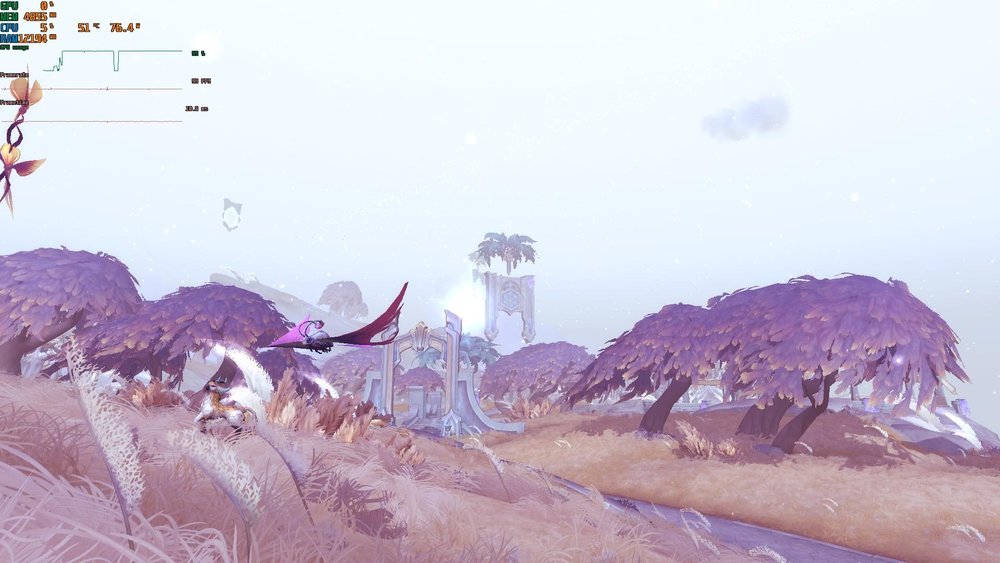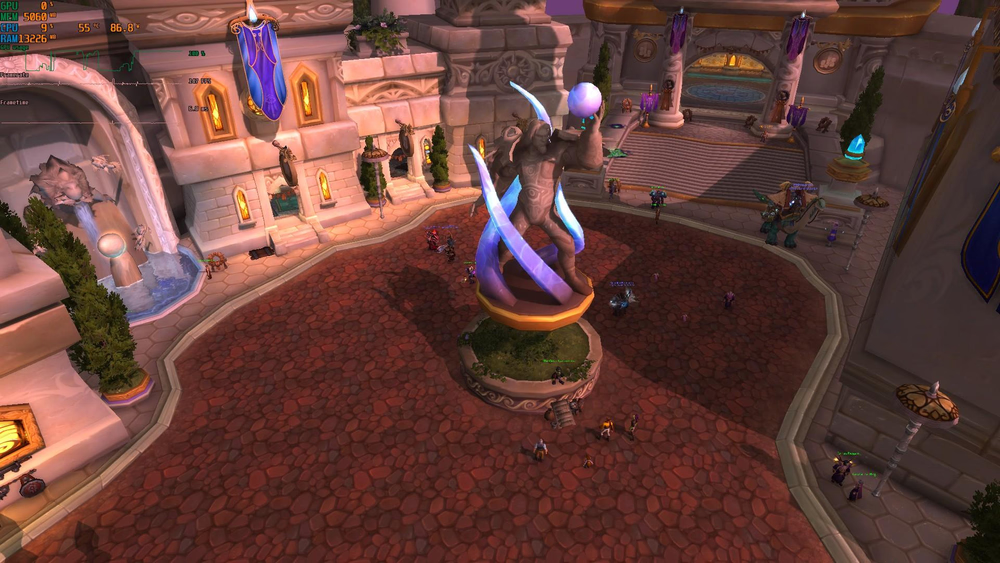Intel Arc A380 - first look at Intel discrete graphics card
Intel is entering the discrete graphics card market with the Arc series. Some cards are already out so let's take a look at entry level Arc A380 and what Intel is planning to release.



Intel dGPU
Intel is planning to release multiple generations of their new dedicated graphics card. First generation is called Arc and all cards start with an A. Next generation is Battle Mage then Celestial and Druid. As for the numbers, they follow a similar scheme as their CPUs - Core i3 and A300 cards, i5 and A500 cards, i7 and A700 graphics cards.
Arc A380 is an entry level card and just like Core i3 will not win any benchmarks. Think as something better than iGPU
. Arc A550 will be middle of the pack and then Arc A750 and Arc A770 will be top SKUs. For Ark generation, it's expected that A750/770 will have similar performance to RTX 3060 or RX 6600. For laptops there are mobile variants and those are less known, although there are some A300M equipped laptops out there and initial benchmarks aren't that good.
As of the time of writing this article Intel did not release Arc globally. There are few laptops, some shops sell the A380 and other cards are constantly in release is coming soon
mode. Intel is delaying the release because of their drivers and software. They have an enormous backlog of things to implement and fix that they are just overwhelmed at the moment.
For a detailed review of Arc A380 and Intel problems you can watch Gamers Nexus videos linked below:
Technical limitations
There are some limitations Intel is facing. First of them is Resizable BAR or ReBAR for short. It's a part of PCIe specification and allows the CPU to access the whole memory of the GPU. This part of the spec wasn't used by PCs until recently. AMD calls it Smart Access Memory
while Nvidia just sticks to the original name. Enabling it does improve performance a bit, depending on the game, but it's not something big, more like a feature for future games to utilize.
ReBAR is available for Ryzen 5000 and newer (with BIOS updates it can be available for 3000 and newer), Intel 10th gen CPUs and newer. You will also need RTX 3000 or newer or Radeon RX 6000 or newer (or Intel Arc GPU).
For Intel ReBAR support is pretty much mandatory, to a point where Intel is advising not to buy and use their cards in systems without ReBAR support. Without ReBAR the cards seem to lose some performance, in some games even a significant amount but more so the frame time consistency gets worse and you may notice stuttering or some random lag
spikes.

Second limitation is DX 9 - Intel won't be creating a DX 9 driver and instead there will be a translation layer that translates DX 9 system calls to DX 12. This will work, but there can be DX 9 games having problems with either performance or running at all. Note that DX 9 is very old.
Partially DX 11 can also be affected. DX 12 has very small, low-level drivers and gives more control to the game developer. DX 11 wanted to do a lot of things at the driver level to optimize performance. The problem is Intel does not have years of DX 11 driver development and optimization. They are just behind and will have to rapidly work on their code base.
So in short - Intel GPUs are for relatively new systems and best if used to play relatively new DX 12 games. Even when reviewers already are positive about the hardware expect a big early adopter tax on the first generation.
Benchmarks - AMD CPU and Intel GPU
I've tested World of Warcraft (Shadowlands), Final Fantasy XIV (Endwalker), and a bit of Cyberpunk, Frostpunk, and Starcraft 2. On top of that few synthetic benchmarks. Gamers Nexus did already a typical games list review and I wanted to check a few custom things as well as the MMOs I play.
All tests were done on Windows 10 at 1080p resolution on a Ryzen 5900X system with 32GB of RAM (4x8GB 3800CL19). Intel driver version was 31.0.101.3277. ReBAR was turned on unless stated otherwise.
World of Warcraft: Shadowlands - DX 12
Graphical performance of A380 in WoW puts it around GTX 1050 Ti. In some cases it's bit better in other bit below what I got for GTX 1050 Ti in the past. What is worth pointing out is quite low 0.1% low FPS which is an indicator that the frame times aren't consistent - you get a lot of quick ones but constantly there will be a few much slower which can create a feeling of stuttering even at high average FPS.

Ray Tracing - World of Warcraft
Intel Arc GPUs do support ray tracing and Intel did put some bold claims about it. A380 is a bit too low for meaningful ray tracing in top-of-the-line games like Cyberpunk but WoW does have a rather simple implementation of ray traced shadows. I've tested a few zones where it's quite visible and it worked in 2 out of 3 tested zones. Bastion and Legion Dalaran run fine while in Maldraxxus where they have local light sources casting shadows the game soft-crashed each time I wanted to enable DXR so I could not test DXR performance there.

In Bastion when looking on some trees the FPS drop is minimal while the trees get some shadows. In Dalaran which has quite a bit more complex geometry, the FPS drop can reach as much as 44%. In old WoW:BfA benchmarks RTX 2060 could also reach 40% drops but in pretty much any zone. RTX 3070 in Shadowlands had 20% or lower drops. This will require re-testing some other DXR zones from those old benchmarks to see how Intel is handling ray tracing overall in this game.
Update: I've tested DXR bit more and the performance drop is there as expected: ray tracing and API scaling benchmarks.
Final Fantasy XIV - DX 11
In the Endwalker benchmark Arc A380 reaches 14 631 points with the standard laptop
preset (low-ish) which is bit better than GTX 1050 Ti and RX 470 tested before. Overall at 1080p the game runs fine, aside from densely packed areas like Limsa Lominsa (which needs powerful hardware to run smooth). Frametimes seem to be more consistent in this game.

Starcraft 2 - DX 9
Starcraft 2 is a typical DX 9 game that runs on one CPU core. If you get too many units, especially with some more complexity to it the performance will tank to slideshow even on top-of-the-line CPUs. There is some graphics load to the game and this benchmark was done on the high
settings:

These tests were done in the unit tester where 100 vs 100 marines were attacking each other. Repeated a few times for some consistent data.
As Intel isn't going to invest in a DX9 driver and instead makes a DX 9 over DX 12 sudo-driver I've tested how the game will perform when using DXVK libraries that work as a DX 9 and DX 11 over Vulkan sudo-drivers. It's intended mostly for playing Windows games on Linux but it also can be used on Windows, especially on some less optimal old games.
Vulkan is similar to DX 12 and as you can see even this not really supported solution improves SC2 performance noticeably. This will not solve some of the mass combat limitations and has the problem with aggressive shader compilation (or something related to this) that can cause a lot of stuttering, especially when a new asset is loaded/being rendered. In some test passes the 0.1% low FPS was really low.
Intel A380 versus GTX 1050 Ti

A380 competing against a low-end GPU from 2016 may not look impressive but we are talking about the first dGPU from Intel. A770 is way better while Chinese attempts at their own dGPUs based on some ARM or custom IP are still close to no performance
(while custom CPU designs are getting quite a lot of wins here and there). consumer GPUs are way harder to make than CPUs or server GPU/accelerators for compute only.

Unigine Valley is a synthetic benchmark from 2013. It's quite old and not really that relevant anymore. It does however test Intel driver problems. DX 11 does run but DX 9 mode crashes soon thereafter. And using DXVK to move DX 9 draw calls to Vulkan fixes
the issue and even gives a good score.
ReBAR on versus off
So does ReBAR is really that essential for Arc performance? Gamers Nexus did show performance drops and even greater frame times consistency problems. In my case, it looks like so:

This is a relative chart where ReBAR result was given 100% and ReBAR off result was calculated based on ReBAR score. As you can see the performance drop for the synthetic benchmarks and some FF14/WoW scenarios is rather small. It's getting bigger in Cyberpunk, Frostpunk, and cities of FF14 packed with players.
DX 11, 12 and Vulkan draw calls
3DMark API overhead test is a benchmark trying to push as many draw calls per second as possible. It's not been actively supported since 2021 so it may not give representative results for Intel Arc but it does show something odd:

DX 11 single and multi-threaded get very low results while DX 12 and Vulkan seem in line with GTX 1050 Ti. If A380 isn't good at draw calls for DX 11 it could explain some low game benchmark results (like FF14 cities full of player characters?).
Summary
Intel A380 is on the market, it works, it's not gamers dream but it's still a success for Intel that they managed to make a GPU. It's now up to them to start polishing the drivers and software to then have silicon level fixes and improvements in Battle Mage and subsequent generations. Having three companies on the market will just push them even more to innovate and should also help with prices - assuming all goes well.
There are some Arc M based laptops, there will be more, the 300M is somewhat better than iGPU so it should handle light online games and alike, but do check reviews as there are cut down models. For media consumption, AV 1 support will help as well. For desktops in Europe and US we are mostly waiting for the Arc 700 launch. The 300 are as of now only on some markets and intended mostly for office/OEM PCs.




Comment article